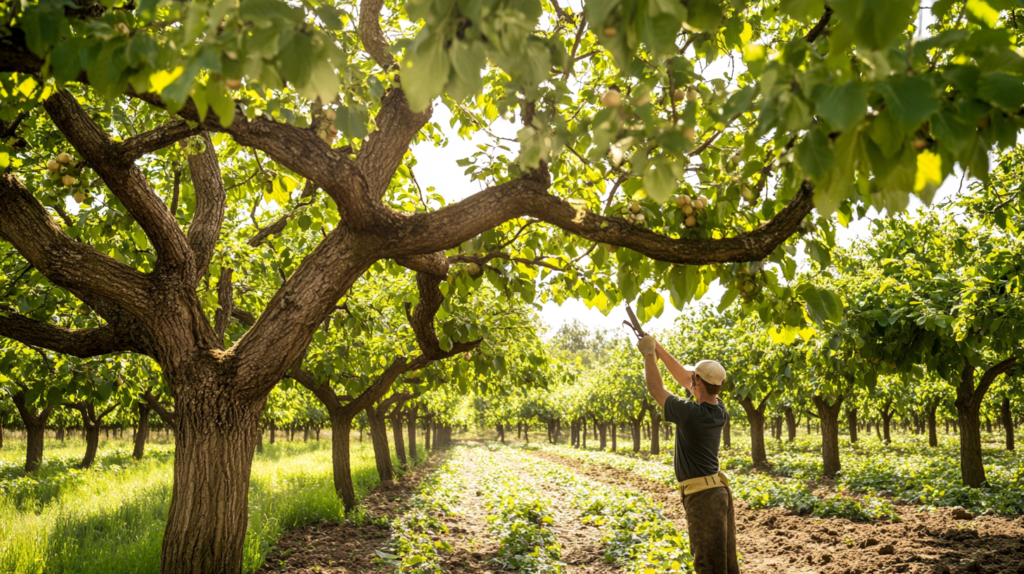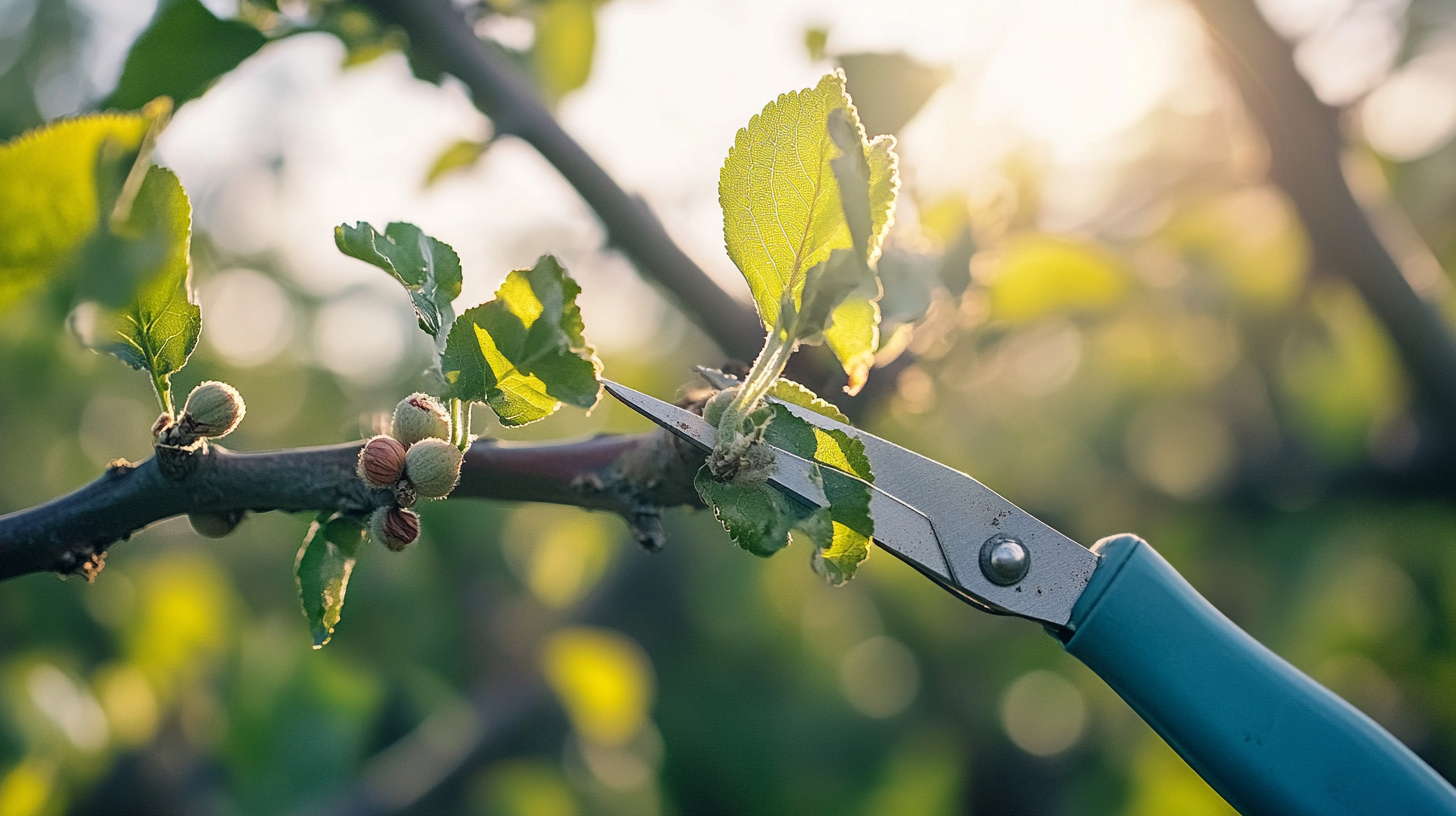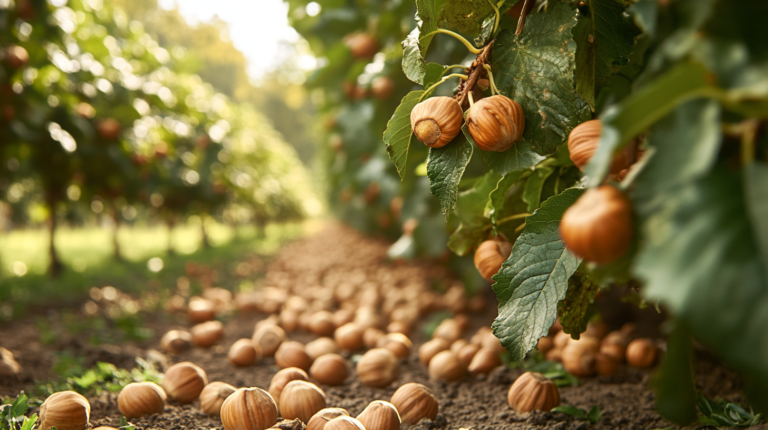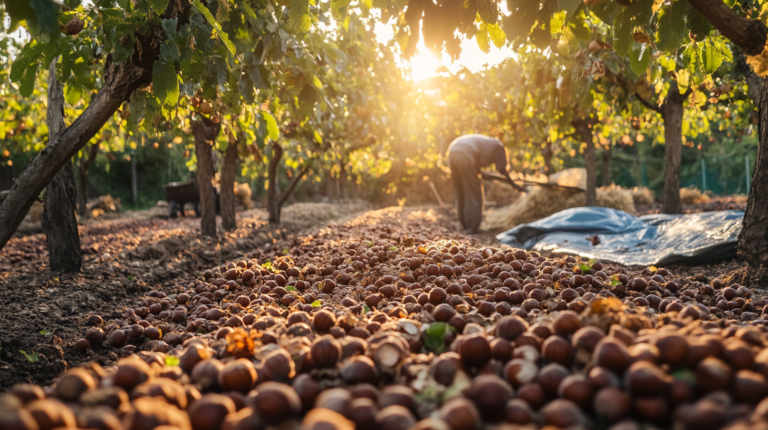Pruning Hazelnut Trees: Techniques for Optimal Growth
Proper pruning is essential for maintaining healthy, productive hazelnut trees. This comprehensive guide will cover the techniques and best practices for pruning hazelnut trees to promote optimal growth and maximize nut production.
Understanding the Importance of Pruning
Pruning hazelnut trees serves several crucial purposes:
- Establishing a strong tree structure
- Improving light penetration and air circulation
- Removing dead, diseased, or damaged wood
- Stimulating new growth and maintaining vigor
- Enhancing nut production
- Facilitating easier harvesting and orchard management
Proper pruning is essential for maintaining healthy, productive hazelnut trees, as part of an overall strategy for growing hazelnuts successfully.
Types of Pruning Cuts
Before diving into specific pruning techniques, it’s important to understand the two main types of pruning cuts[1]:
- Thinning cuts: These remove an entire branch back to its point of origin or to a lateral branch. Thinning cuts are used to open up the tree’s canopy and reduce overall density.
- Heading cuts: These remove only part of a branch, stimulating growth below the cut. Heading cuts are primarily used during the training phase of young trees.

Training Young Hazelnut Trees
Proper training of young hazelnut trees is crucial for establishing a strong framework that can support heavy nut crops and withstand environmental stresses like ice and snow.
First Year
- Initial topping: After planting, make a heading cut 28 to 34 inches from the ground. This reduces water demand on the transplanted tree and encourages new growth below the cut.
- Sucker removal: Throughout the growing season, remove suckers growing from the ground. It’s easiest to remove them when they’re still young and green.
- Scaffold selection: During the first winter, carefully choose 3 to 5 limbs to become scaffold branches. Look for limbs with a 45- to 60-degree angle to the trunk, as these form the strongest attachments.[1]
Second Year
- Additional scaffold selection: Choose one or two more scaffold limbs, ensuring they’re evenly spaced around the trunk with about 6 inches of vertical space between them.
- Remove competing branches: Prune out branches that aren’t selected as scaffolds.
- Encourage lateral growth: If primary scaffold branches have grown a couple of feet but haven’t produced lateral shoots, make heading cuts to stimulate shoot formation.[1]
Third to Fifth Years
- Continue scaffold development: Select additional scaffold branches as needed, maintaining a balanced structure.
- Promote vertical growth: For varieties like Yamhill that tend to grow flat and wide, continue to snip 6 inches off the tips of main branches to encourage upward growth.
- Remove problematic branches: Prune out any branches that cross through the tree or are poorly positioned.[3]
Pruning Mature Hazelnut Trees
Once the basic framework is established, pruning focuses on maintaining tree health, managing growth, and optimizing nut production.
General Pruning Tips
- Timing: Prune during the dormant season (December to February) for the most vigorous spring growth. Summer pruning can be used for removing suckers and dead or dying limbs.
- Pruning intensity: Prune young trees lightly and mature trees more heavily, especially if they’ve shown poor growth in the previous year.
- Gradual approach: Don’t try to correct years of neglect in a single pruning session. Limit removal to 25-30% of the living canopy at any one time.
- Maintain growth: Hazelnut trees should put on at least 6 to 8 inches of new growth every year on branches at shoulder height. Pruning helps maintain this growth rate.[1],[2]
Specific Pruning Techniques
- Open center pruning: Remove 1-3 upright limbs in the center of dense canopies to allow more light penetration.
- Thinning cuts: Use thinning cuts to open up the canopy, allowing light to reach all parts of the tree.
- Remove weak wood: Prune out small, weak shoots to prevent overcrowding, but retain some to help prevent water sprout formation.
- Manage fruiting wood: As a general rule, remove about 25% (or less) of fruiting wood (branches with catkins) during each pruning session.
- Rejuvenation pruning: For old, crowded trees, head back into 3- and 4-year-old wood to stimulate new growth and maintain production. Make these cuts just above a lateral branch.[2]
Special Considerations
Pruning Different Varieties
Different hazelnut varieties may require slightly different pruning approaches depending on their climate requirements:
- Upright varieties (e.g., Jefferson): These naturally grow in a vertical direction and may require less intervention to maintain an upright form.
- Spreading varieties (e.g., Yamhill): These tend to grow flat and wide, requiring more frequent tip pruning to encourage upward growth.[3]
Disease Management
Pruning plays a crucial role in managing diseases in hazelnut orchards, but ensuring the trees are planted in the best soil types for growing hazelnuts also contributes to overall disease resistance.:
- Eastern Filbert Blight: Regular pruning helps remove infected branches and improves air circulation, reducing the risk of this fungal disease.
- Bacterial blight: Proper pruning techniques, including making clean cuts and avoiding pruning during wet weather, can help prevent the spread of bacterial blight.
Pruning Tools and Techniques
- Tool selection: Use bypass pruners for small branches, loppers for medium-sized branches, and pruning saws for larger limbs.
- Clean cuts: Make thinning cuts at the branch collar where the branch attaches to a larger limb or the trunk. This promotes faster healing and reduces the risk of wood-rotting fungi[2].
- Tool sanitation: Clean and disinfect pruning tools between trees to prevent the spread of diseases.
- Wound treatment: Do not use wound dressing or paint on pruning cuts. These can actually impede the tree’s natural healing process[2].
Mechanical Pruning
In recent years, some growers have turned to mechanical pruning to reduce labor costs and time:[4]
- Equipment: Mechanical pruning is carried out with specialized disks assembled on adjustable bars.
- Advantages: Mechanical pruning can significantly reduce overall intervention time in mature orchards.
- Limitations: Mechanical pruning is not exhaustive and typically requires manual follow-up pruning for best results.
Conclusion
Proper pruning is a critical aspect of hazelnut tree management. By following these techniques and guidelines, growers can establish strong tree structures, maintain tree health, and optimize nut production. Remember that pruning is both a science and an art – while these guidelines provide a solid foundation, growers should also observe their trees’ responses to pruning and adjust their techniques accordingly.
Regular, thoughtful pruning will help ensure a long-lived, productive hazelnut orchard that can withstand environmental stresses and produce bountiful harvests year after year. As with any agricultural practice, staying informed about the latest research and recommendations from local extension services can help growers refine their pruning techniques and address any region-specific challenges.
Sorces:
[1] https://wcngg.com/2020/07/10/training-and-pruning-basics-for-hazelnut-trees/
[2] https://extension.oregonstate.edu/crop-production/nuts/pruning-hazelnut-trees-basic-guide
[3] http://www.growinghazelnuts.com/shaping-trees-for-optimal-growth/
[4] https://www.vivainicola.com/en/cultivation/pruning-of-the-bushy-vase-hazelnut-tree/
[5] https://greg.app/how-to-prune-common-hazel/
[6] https://www.planetnatural.com/hazelnut-tree/
[7] https://hawkslandscape.com/hazelnut-pruning-winter-care-and-fertilizing/
[8] https://www.thespruce.com/hazelnut-tree-growing-guide-5196351
[9] https://www.campagnola.co.uk/news/hazel-tree-pruning-how-when-and-with-which-tools/






